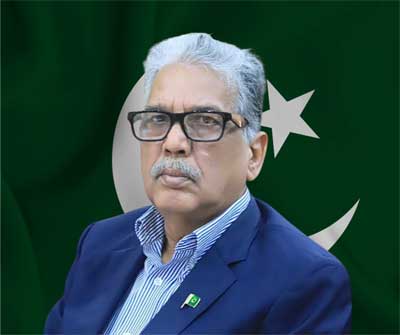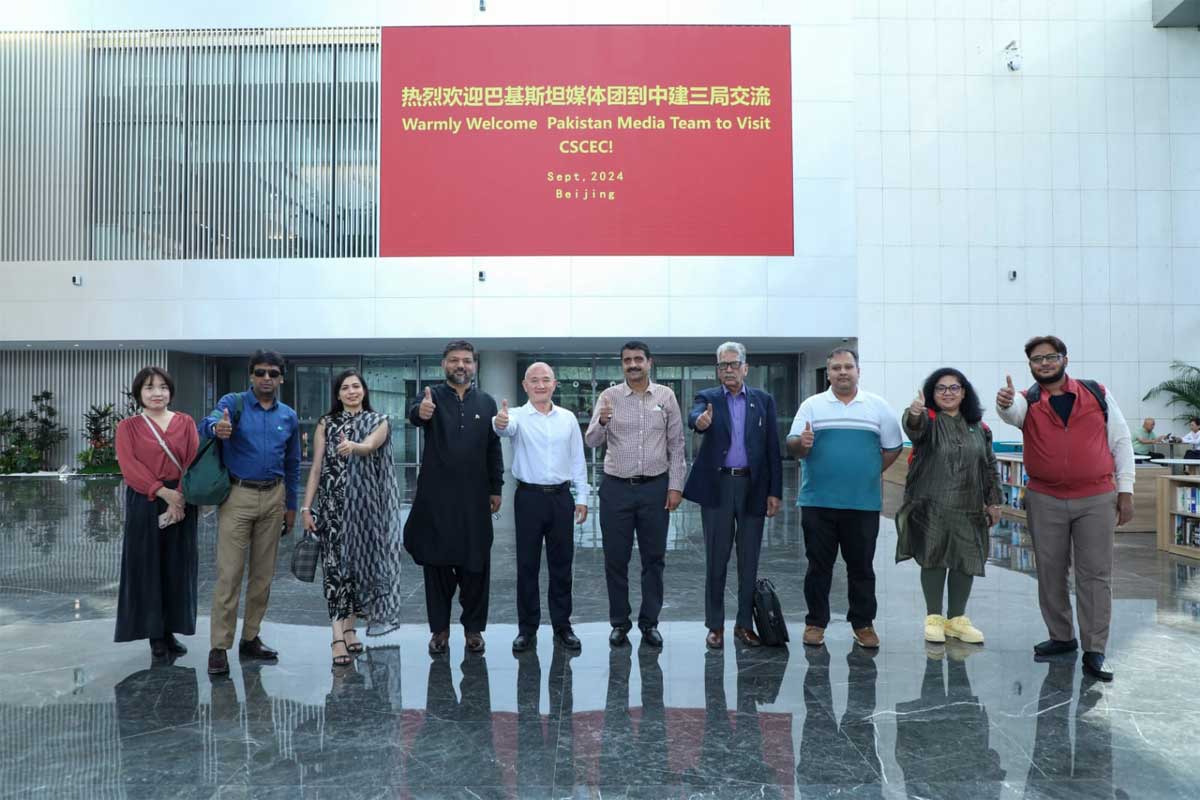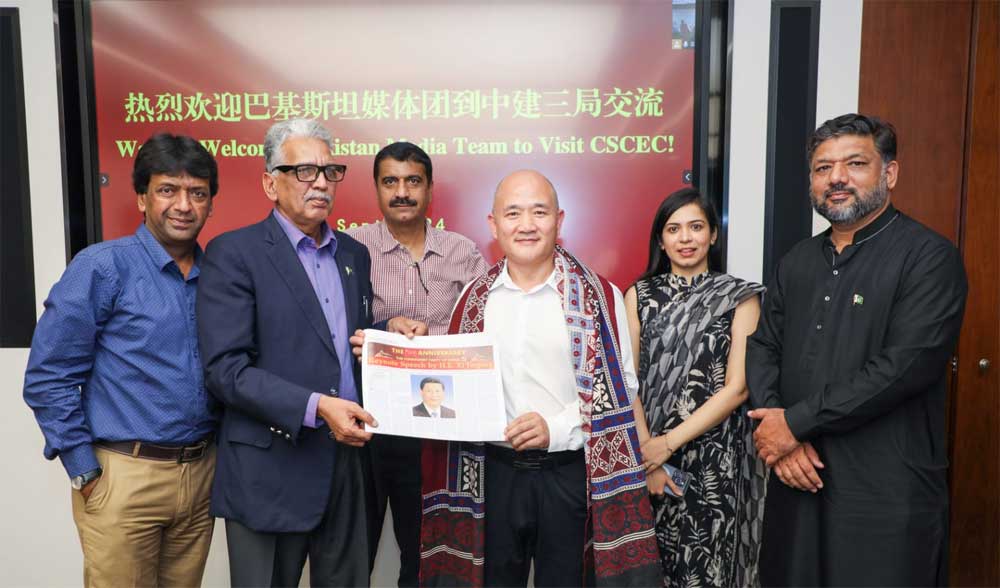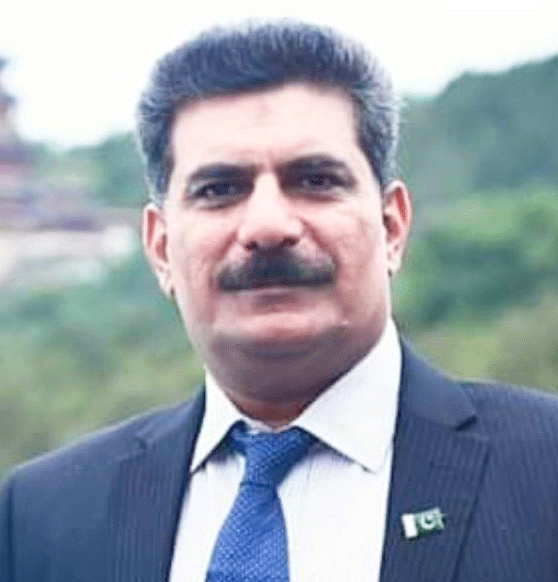

As cities around the world grow in population and complexity, the challenges of urban development have become increasingly pressing. In this context, China State Construction Engineering Corporation (CSCEC) has emerged as a global leader in urban planning and construction, leveraging cutting-edge technologies and innovative methodologies to create sustainable, efficient, and livable cities. As Pakistan’s urban centers rapidly expand, there is great potential for the application of CSCEC’s innovative solutions to address the country’s urban challenges.
During a briefing to the Pakistan Media Delegation by Li Linagyuan, Vice President of CSCEC, some of the most advanced technologies and strategies employed by CSCEC in urban development were discussed. These innovations, if applied in Pakistan, could address the pressing challenges posed by rapid urbanization, inadequate infrastructure, and environmental concerns, offering sustainable solutions for the country’s growing cities.
The Urbanization Challenge in Pakistan
Pakistan’s cities are experiencing unprecedented growth, driven by population expansion, rural-to-urban migration, and economic development. The country’s urban population is projected to double by 2050, putting immense pressure on already strained infrastructure, housing, transportation, and public services. Major cities like Karachi, Lahore, Islamabad, and Multan are grappling with challenges such as traffic congestion, pollution, inadequate housing, and limited access to clean water and sanitation.
Compounding these issues is the fact that much of Pakistan’s urban development has been unplanned. Sprawling, inefficient cities have emerged, which struggle to provide basic services to their inhabitants. The need for innovation in urban planning and construction has never been more urgent. In this context, the technologies pioneered by CSCEC offer a way forward, enabling Pakistan’s cities to grow more sustainably, efficiently, and resiliently.
CSCEC’s Innovations in Urban Planning and Construction
CSCEC has been at the forefront of urban development for decades, applying cutting-edge technologies and methodologies to address the complex challenges of modern cities. Below are some of the most notable innovations employed by CSCEC and their potential application in Pakistan:
Smart City Technologies
Smart city technologies are transforming urban areas by integrating information and communication technologies (ICT) to optimize infrastructure, services, and resource management. CSCEC has been a leader in the design and implementation of smart cities, using advanced data analytics, IoT (Internet of Things) devices, and AI-powered systems to improve traffic management, energy efficiency, waste management, and public safety.
In Pakistan, where cities like Karachi and Lahore face chronic traffic congestion, smart traffic management systems could help alleviate bottlenecks by optimizing traffic flow in real-time, reducing travel times, and cutting down on vehicle emissions. Moreover, smart energy grids can be employed to manage electricity demand more efficiently, minimizing power outages and lowering energy consumption.
Green Building Technologies
As the world shifts toward sustainable development, CSCEC has embraced green building practices that reduce the environmental impact of construction projects and enhance the energy efficiency of buildings. The company employs a variety of techniques, such as the use of sustainable materials, renewable energy systems, and energy-efficient building designs, to minimize carbon emissions and promote long-term sustainability.
In Pakistan, where rapid urbanization has often come at the expense of environmental degradation, the adoption of green building technologies could play a vital role in mitigating the effects of climate change and reducing pollution. Green buildings not only help conserve energy but also create healthier living environments by improving air quality and reducing water usage. Incorporating these technologies in housing projects, office spaces, and commercial centers across Pakistan could lead to a more sustainable urban landscape.
Prefabrication and Modular Construction
One of CSCEC’s most revolutionary innovations in construction is its use of prefabrication and modular construction techniques. Prefabrication involves manufacturing building components in a factory setting before assembling them on-site, which significantly reduces construction time and costs. This method also improves quality control, as building elements are constructed under controlled conditions, reducing the risk of defects.
Modular construction, where entire sections of a building are pre-constructed and then assembled on-site, has been used by CSCEC to construct high-rise buildings in record time. For example, the company constructed a 57-story skyscraper in just 19 days using prefabricated modules.
In Pakistan, where housing shortages are a major issue in urban areas, prefabrication and modular construction could provide a rapid and cost-effective solution to address the growing demand for affordable housing. By utilizing these techniques, Pakistan could build large-scale housing projects quickly and efficiently, providing much-needed homes for its expanding urban population.
Integrated Urban Development Models
CSCEC has pioneered the concept of integrated urban development, which focuses on creating self-sustaining communities that combine residential, commercial, and recreational spaces within a single development. These “cities within cities” are designed to reduce the need for long commutes, minimize environmental impact, and create vibrant, walkable communities.
This model could be particularly beneficial for Pakistan’s growing cities, where long commutes and inadequate public transportation systems contribute to traffic congestion, pollution, and decreased quality of life. Integrated urban developments would provide residents with access to all the amenities they need within close proximity, reducing the reliance on private vehicles and promoting a more sustainable and efficient urban lifestyle.
Sponge City Technology
Flooding is a major concern for many of Pakistan’s cities, especially during the monsoon season. CSCEC has developed sponge city technology to mitigate the impact of urban flooding and improve water management. A sponge city is designed to absorb and store rainwater, preventing flooding while also providing a sustainable source of water for urban areas.
This is achieved through the use of permeable materials, green roofs, rain gardens, and underground storage tanks that capture and store rainwater. Sponge city designs can also help to combat the urban heat island effect, where cities experience higher temperatures than surrounding rural areas due to the prevalence of heat-absorbing materials like concrete and asphalt.
Given the increasing frequency of extreme weather events in Pakistan, the adoption of sponge city technologies could help cities like Karachi and Lahore better manage water resources and prevent the devastating effects of urban flooding.
The Potential for CSCEC’s Innovations in Pakistan
The application of CSCEC’s cutting-edge technologies and methodologies in Pakistan’s growing cities holds immense potential. By adopting smart city technologies, Pakistan can improve its urban infrastructure and services, making cities more efficient, livable, and environmentally sustainable. Similarly, the use of green building technologies and prefabrication could revolutionize the construction industry, providing affordable housing solutions while reducing the environmental impact of urban development.
Furthermore, integrated urban development models could transform Pakistan’s cities into self-sustaining communities, promoting a more efficient and sustainable urban lifestyle. Sponge city technologies would provide a much-needed solution to the challenge of urban flooding, helping Pakistan’s cities become more resilient to climate change.
Challenges and the Way Forward
While the potential benefits of CSCEC’s innovations in urban development are clear, there are also challenges to their implementation in Pakistan. Issues such as inadequate regulatory frameworks, limited financial resources, and a lack of technical expertise could hinder the adoption of these technologies. However, through collaboration with international partners like CSCEC and a commitment to sustainable development, Pakistan can overcome these challenges and take steps towards creating more efficient, livable, and resilient cities.

To achieve this, the government must prioritize urban planning and infrastructure development, investing in the necessary technologies and fostering partnerships with international companies that can provide the expertise and resources required for large-scale projects. Public-private partnerships, regulatory reforms, and incentives for green construction could also play a vital role in promoting the adoption of innovative urban development practices.
Pakistan should create sustainable, efficient, and resilient cities that meet the needs of its expanding urban population. As Pakistan continues to urbanize, collaboration with global leaders in urban development like CSCEC will be key to building cities that are not only livable but also environmentally sustainable and economically viable for future generations.
At the conclusion of the briefing and visit to CSCEC headquarters, I, along with Saeed Sarbazi, President of the Karachi Press Club (KPC), and Shoaib Ahmed Khan, Secretary General of KPC, presented a Sindhi Ajrak to Li Liangyuan, Vice President of CSCEC. We also gifted him a special issue of The Financial Daily, commemorating the 100th anniversary of the CPC with 100 quotes from President Xi Jinping. Li presented to the all delegation members the mooncakes as a gift, in honor of the upcoming Mid-Autumn Festival. Afterward, he personally saw us off at our car in the CSCEC parking area.




